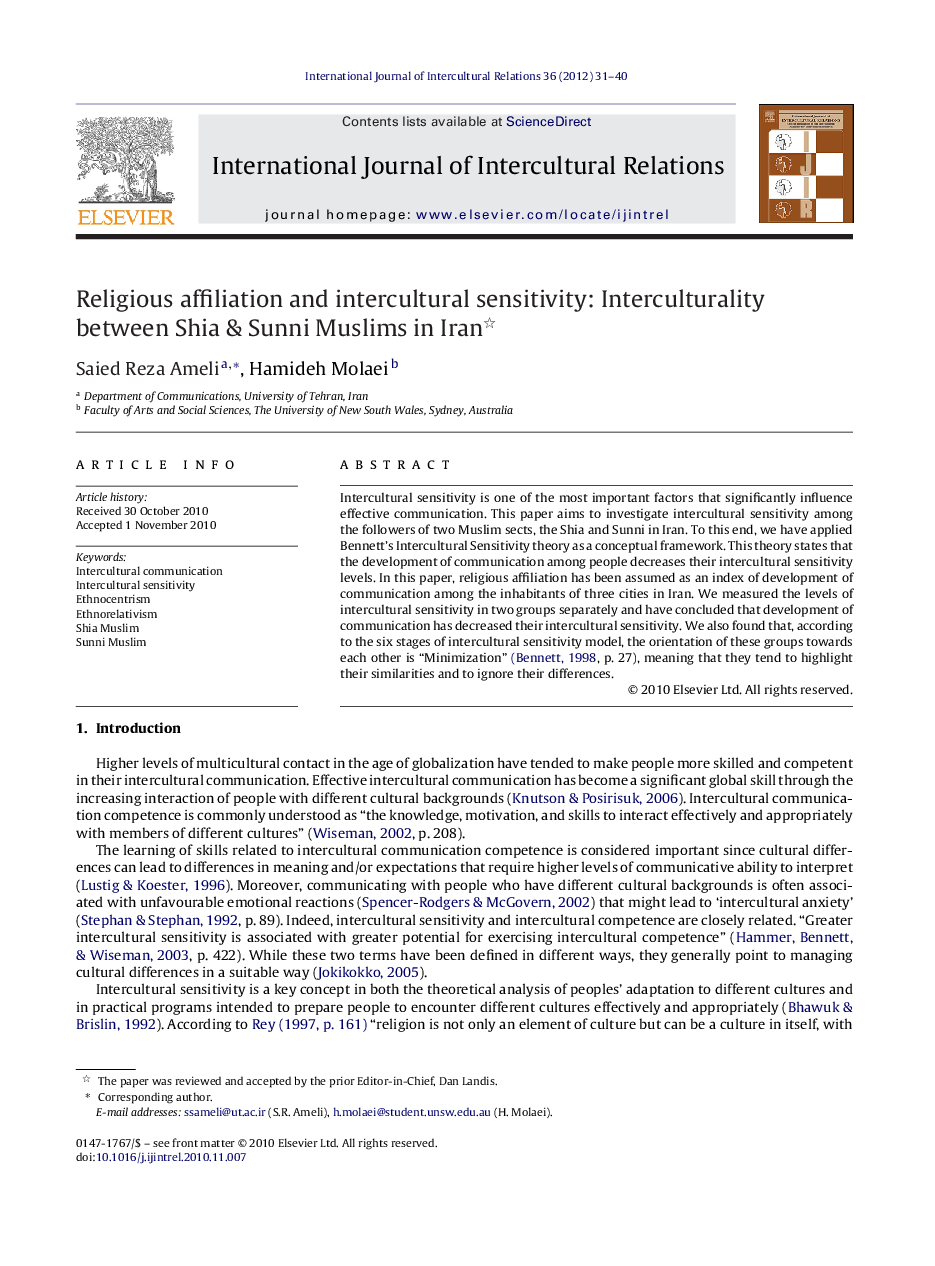| کد مقاله | کد نشریه | سال انتشار | مقاله انگلیسی | نسخه تمام متن |
|---|---|---|---|---|
| 947120 | 1475765 | 2012 | 10 صفحه PDF | دانلود رایگان |

Intercultural sensitivity is one of the most important factors that significantly influence effective communication. This paper aims to investigate intercultural sensitivity among the followers of two Muslim sects, the Shia and Sunni in Iran. To this end, we have applied Bennett's Intercultural Sensitivity theory as a conceptual framework. This theory states that the development of communication among people decreases their intercultural sensitivity levels. In this paper, religious affiliation has been assumed as an index of development of communication among the inhabitants of three cities in Iran. We measured the levels of intercultural sensitivity in two groups separately and have concluded that development of communication has decreased their intercultural sensitivity. We also found that, according to the six stages of intercultural sensitivity model, the orientation of these groups towards each other is “Minimization” (Bennett, 1998, p. 27), meaning that they tend to highlight their similarities and to ignore their differences.
Research highlights▶ We investigate the intercultural sensitivities among Shia and Sunni Muslims in Iran. ▶ We apply the Bennett's Intercultural Sensitivity theory as the conceptual framework. ▶ We concluded that development of communication decreased intercultural sensitivities. ▶ The orientation of these groups towards each other was minimization of difference.
Journal: International Journal of Intercultural Relations - Volume 36, Issue 1, January 2012, Pages 31–40